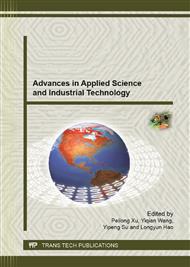p.598
p.603
p.608
p.614
p.620
p.624
p.630
p.634
p.638
Improved PSO Algorithm Based MPPT Control under Partial Shaded Environment
Abstract:
In partial shaded environment, the power output of generation system which contains multiple sets of PV cells presented multi-peak characteristic. Traditional maximum power point tracking (MPPT) couldnt maximize the capability of PV array in the reason that they were likely to fall into local maximum point. MPPT control based on improved PSO algorithm can solve the accuracy problem of multi-peak output efficiency, as well as improve the maximum power point (MPP) searching speed through adaptive learning factors and inertia weight. Using Simulink and the mathematic model of single PV cell, the simulation model of PV array under different topology can be build. On this basis, the power output curves and regularities under various partial shaded situations can be obtained. Simulated the improved MPPT method in MATLAB, the superiorities was obtained by contrasting with existing MPPT methods in both MPP searching speed and accuracy.
Info:
Periodical:
Pages:
620-623
Citation:
Online since:
September 2013
Authors:
Keywords:
Price:
Сopyright:
© 2013 Trans Tech Publications Ltd. All Rights Reserved
Share:
Citation:


